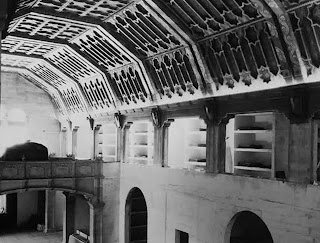| English: Sidney Lovell photo, small view (Photo credit: Wikipedia) |
Tucked into a large residential area on Cherry Avenue and San Antonio Drive stands Sunnyside Memorial Park and Mausoleum.
Operators of the first Sunnyside promised a mausoleum in 1915 and retained the design services of Sidney Lovell who had designed Rose Hill mausoleum in Chicago. Once oil was discovered on Signal Hill in 1921, a "cemetery war" broke out when it was discovered that the land for mausoleum was sold for oil drilling.
Families pressured Long Beach to stop the drilling. City manager Windham announced that Sidney Lovell, president of the American Association of Cemeteries, had been looking for "his final and greatest effort in constructing an artistic burial ground." Windham remarked that if Lovell did not use the design for another site, the city could retain him as a consultant. He also added that with a new cemetery, graves could be removed from Sunnyside and reburied "without expense to the families concerned."
 |
| Early photograph |
 |
| Noiseless coffin elevator |
It opened in 1923 with a receiving vault that held bodies awaiting final entombment. An east wing was added in 1925. In 1933, approximately 6,000 more marble crypts were added, and in 1940, a chapel next to the crematorium was completed. Much of the original decor remains, including the letters "SM" inscribed in mosaics as well as on crypt gates.
 |
| Unfilled crypts |
The 38-acre cemetery, mausoleum and mortuary were bought in 1960 by Forest Lawn. In 1974, a portion of the ground were consecrated for entombment of people of the Jewish faith. The area is called Rose of Sharon Memorial gardens.
 |
| Much of original 1923 design is still in place |
Today, it is known as Forest Lawn Long Beach.
